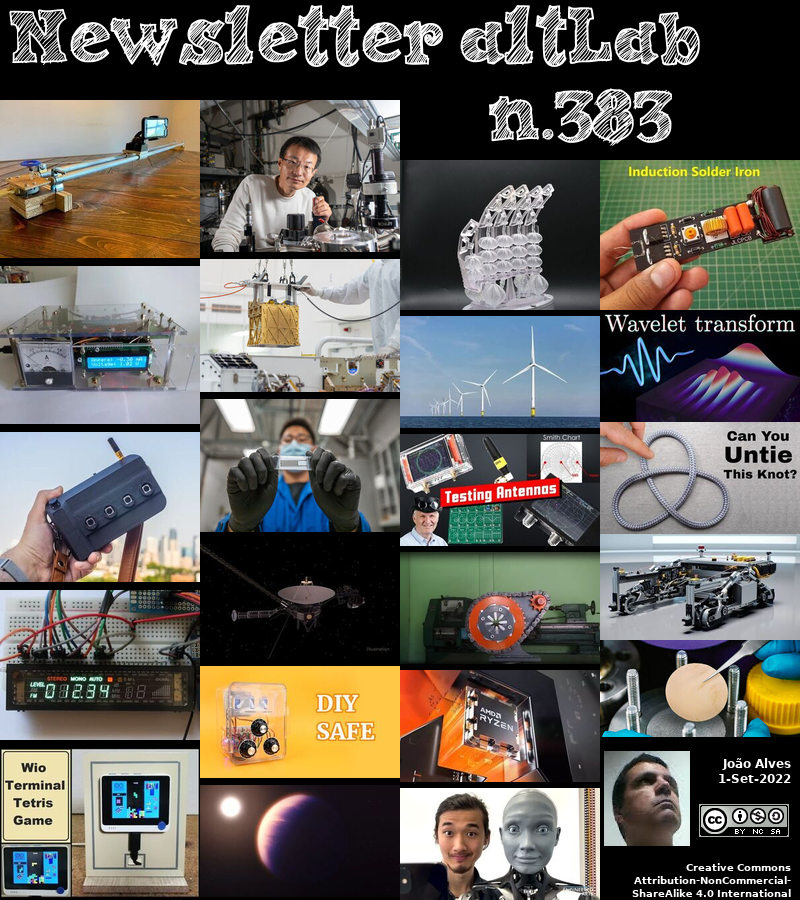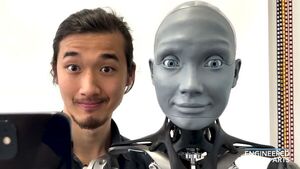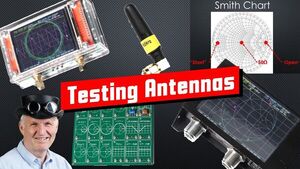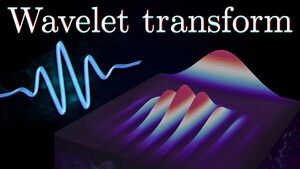2022-09-01 - Nº 383
Editorial
Esta é a Newsletter Nº 383 que se apresenta com o mesmo formato que as anteriores. Se gostar da Newsletter partilhe-a!
Todas as Newsletters encontram-se indexadas no link.
Esta Newsletter tem os seguintes tópicos:
Faz hoje anos que nascia, em 1826, o inventor norte-americano Alfred Ely Beach. Ele ficou conhecido por ser o editor americano da revista Scientific American que noticiou os desenvolvimentos tecnológicos e patentes no século XIX. É ainda hoje publicada, uma das principais revistas científicas do mundo. O próprio Beach inventou um escudo de túnel e construiu o metro de tubo pneumático que impulsionava uma carruagem através da pressão de ar gerada por enormes ventiladores. O túnel era curto - um bloco - por isso funcionava como uma demonstração (1870-73), com uma estação e um vagão de comboio. Em 1856 ganhou o Primeiro Prémio e uma medalha de ouro na Exposição do Palácio de Cristal, em Nova Iorque. Beach tinha inventado uma máquina de escrever para cegos, parecida com a máquina de escrever moderna na disposição das suas chaves e barras de escrever, mas estampou as suas letras numa tira de papel estreita em vez de uma folha.
Faz também hoje anos que nascia, em 1858, o químico, físico e engenheiro austríaco Carl Auer von Welsbach. Ele inventou o manto de gás que melhorou muito o brilho da luz que podia ser obtida a partir de lâmpadas a gás. Enquanto fazia testes de chama para examinar o espectro de certos compostos de terras raras, ele observou que as pequenas contas de material de teste num fio de platina se tornaram brancas e incandescentes. Teve então a ideia de mergulhar as teias de algodão com uma solução dos sais, depois queimar o algodão deixando uma matriz do composto. As suas experiências começaram com resultados ligeiramente promissores com óxido de lantânio, depois uma mistura com magnésia. Também experimentou óxidos de zircónio e outros antes de adicionar óxido de tório, o que tornou os mantos comercialmente viáveis. A sua invenção foi adoptada em todo o mundo onde quer que houvesse gás produzido, o que significava que tinha um negócio lucrativo a melhorar e a fabricá-los.
Por fim, faz hoje anos que nascia, em 1877, o físico e químico inglês Francis William Aston. Ele recebeu o Prémio Nobel da Química de 1922 pelo seu desenvolvimento do espectrógrafo de massa, um dispositivo que separa átomos ou fragmentos moleculares de diferentes massas e mede essas massas com notável precisão. Em 1910 tornou-se assistente de Sir J.J. Thomson em Cambridge, que investigava os raios de carga positiva que emanavam das descargas gasosas. Aston inventou o seu espectrógrafo de massa (um novo tipo de aparelho de raios positivos) após a Primeira Guerra Mundial, com o qual mostrou que muitos elementos são misturas de isótopos. De facto, descobriu 212 dos 287 nuclídeos que ocorrem naturalmente. O espectrógrafo de massa é agora amplamente utilizado em geologia, química, biologia, e física nuclear.
Na manhã de 1 de Setembro de 1859, o astrónomo amador Richard Carrington ascendeu ao observatório privado ligado à sua propriedade rural nos arredores de Londres. Depois de ter aberto o obturador da cúpula para revelar o céu azul claro, apontou o seu telescópio de latão em direcção ao sol e começou a esboçar um aglomerado de enormes manchas escuras que lhe apareciam na superfície. De repente, Carrington viu o que descreveu como "duas manchas de luz intensamente brilhante e branca" que irrompiam das manchas solares. Cinco minutos mais tarde as bolas de fogo desapareceram, mas em poucas horas o seu impacto seria sentido em todo o globo. Nessa noite, as comunicações telegráficas em todo o mundo começaram a falhar; houve relatos de fagulhas de máquinas telegráficas, operadores chocantes e papéis de ajuste em chamas. Por todo o planeta, auroras coloridas iluminavam os céus nocturnos, brilhando tão intensamente que as aves começaram a chilrear e os trabalhadores começaram as suas tarefas diárias, acreditando que o sol tinha começado a nascer. Alguns pensavam que o fim do mundo estava próximo, mas os olhos nus de Carrington tinham descoberto a verdadeira causa dos acontecimentos bizarros: uma enorme erupção solar com a energia de 10 mil milhões de bombas atómicas. A chama lançou gás electrificado e partículas subatómicas em direcção à Terra, e a tempestade geomagnética resultante - apelidada de "Evento Carrington" - foi a maior de que há registo a ter atingido o planeta.
 João Alves ([email protected])
João Alves ([email protected])
O conteúdo da Newsletter encontra-se sob a licença  Creative Commons Attribution-NonCommercial-ShareAlike 4.0 International License.
Creative Commons Attribution-NonCommercial-ShareAlike 4.0 International License.
Novidades da Semana

USB Promoter Group Announces USB4® Version 2.0
"The USB Promoter Group today announced the pending release of the USB4® Version 2.0 specification, a major update to enable up to 80 Gbps of data performance over the USB Type-C® cable and connector. The USB Type-C and USB Power Delivery (USB PD) specifications will also be updated to enable this higher level of data performance. All of these specification updates are expected to be published in advance of this year’s series of USB DevDays developer events planned for November. Protocol updates are also being made to enable higher performance USB 3.2, DisplayPort™ and PCI Express® (PCIe®) data tunneling to best use the higher available bandwidth. “Once again following USB tradition, this updated USB4 specification doubles data performance to deliver higher levels of functionality to the USB Type-C ecosystem,” said Brad Saunders, USB Promoter Group Chairman. “Solutions seeing the most benefit from this speed enhancement include higherperformance displays, storage, and USB-based hubs and docks.” Key characteristics of the updated USB4 solution include: - Up to 80 Gbps operation, based on a new physical layer architecture, using existing 40 Gbps USB Type-C passive cables and newly-defined 80 Gbps USB Type-C active cables." [...]
Outras Notícias

Engineers Solve Data Glitch on NASA’s Voyager 1
"A critical system aboard the probe was sending garbled data about its status. Engineers have fixed the issue but are still seeking the root cause. Engineers have repaired an issue affecting data from NASA’s Voyager 1 spacecraft. Earlier this year, the probe’s attitude articulation and control system (AACS), which keeps Voyager 1’s antenna pointed at Earth, began sending garbled information about its health and activities to mission controllers, despite operating normally. The rest of the probe also appeared healthy as it continued to gather and return science data. The team has since located the source of the garbled information: The AACS had started sending the telemetry data through an onboard computer known to have stopped working years ago, and the computer corrupted the information." [...]

Fraunhofer Research Leads Way Into Future of Robotics
"The Germany-based research group’s O3dyn platform uses NVIDIA simulation technologies to create autonomous mobile robots for manufacturing. Joseph Fraunhofer was a 19th-century pioneer in optics who brought together scientific research with industrial applications. Fast forward to today and Germany’s Fraunhofer Society — Europe’s largest R&D organization — is setting its sights on the applied research of key technologies, from AI to cybersecurity to medicine. Its Fraunhofer IML unit is aiming to push the boundaries of logistics and robotics. The German researchers are harnessing NVIDIA Isaac Sim to make advances in robot design through simulation. Like many — including BMW, Amazon and Siemens — Fraunhofer IML relies on NVIDIA Omniverse." [...]

Toshiba Launches its 3rd Generation SiC MOSFETs that Contribute to the Higher Efficiency of Industrial Equipment
"Toshiba Electronic Devices & Storage Corporation ("Toshiba") has launched new power devices, the “TWxxNxxxC series,” its 3rd generation silicon carbide(SiC) MOSFETs that deliver low on-resistance and significantly reduced switching loss. Ten products, five 1200V and five 650V products, have started shipping today. The new products reduce on-resistance per unit area (RDS(ON)A) by about 43%, allowing the drain-source on-resistance * gate-drain charge (RDS(ON)*Qgd), an important index that represents the relationship between conduction loss and switching loss, to be lowered by about 80%. This cuts the switching loss by about 20%, and lowers both on-resistance and switching loss. The new products contribute to higher equipment efficiency. Toshiba will continue to expand its lineup of power devices and to enhance its production facilities, and aims to realize a carbon-free economy by providing high-performance power devices that are easy to use." [...]

First Socketed SoC Processors for Edge Innovation
"Intel has announced the availability of its 12th Gen Intel® Core™ SoC processors for IoT Edge. Representing a new lineup of purpose-built edge products optimized for Internet of Things (IoT) applications, this first-of-its-kind socketed system-on-chip (SoC) delivers high performance integrated graphics and media processing for visual compute workloads, a compact footprint to enable smaller innovative form factor designs, and a wide operating thermal design power (TDP) that enables fanless designs and helps customers achieve product sustainability goals. Digital transformation at the edge requires increased processing power and AI inference performance to future-proof AI workloads. 12th Gen Intel Core SoC processors for IoT Edge respond to these performance demands and expand implementation configurability and overall solution flexibility to enable original equipment manufacturers and original design manufacturers to quickly integrate – and ship – solutions that fit the wide variety of unique vertical market and edge-specific use cases. Additionally, the SoC processors feature manageability capabilities from top to bottom, including Intel vPro options for best-in-class remote control and manageability essential for managing and servicing systems deployed at the IoT edge. Delivering up to 4 times faster graphics¹ and up to 6.6 times faster GPU image classification inference performance² compared with 10th Gen Intel® Core™ desktop processors in a 12W to 65W design, 12th Gen Intel Core SoC processors for IOT Edge include Intel® Thread Director, which intelligently directs the operating system to assign the right workload to the right core." [...]

Toshiba Releases Smart Gate Driver Photocoupler that Helps Simplify Design of Peripheral Circuits for Power Devices
"Toshiba Electronic Devices & Storage Corporation ("Toshiba") has expanded its lineup of smart gate driver photocouplers, the isolated gate driver with overcurrent protection for a power device, either a MOSFETs or IGBT. The new device, “TLP5222,” a 2.5A output smart gate driver photocoupler, has a built-in automatic recovery function from protective operation. Shipments start today. TLP5222 constantly monitors the drain-source voltage (VDS) or collector-emitter voltage (VCE) of the power device that it drives. Built-in overcurrent detection and a protective function detect any rise in VDS or VCE, the result of overcurrent generated in the power device, and gently turn it off. The new photocoupler also has a built-in automatic recovery function that resets the product to normal operation 25.5μs (typ.)" [...]

STMicroelectronics introduces Stellar P6 automotive MCU for EV platform system integration
"STMicroelectronics (NYSE: STM), a global semiconductor leader serving customers across the spectrum of electronics applications, has unveiled new microcontrollers (MCUs) targeting the coming electrified drivetrains and domain-oriented,over-the-airupdateable systems that are the foundation of the next generation of EVs. As the vehicles generate, process, and transfer large data flows, especially to support the next generation of EVs, ST’s new Stellar P automotive MCUs are the industry’s first qualifiable devices for model year 2024 vehicles to integrate the new CAN-XL in-car communication standard. This technology enables the new vehicle platforms to handle growing data flows so the car can operate at peak performance. “The real-time, power-efficient Stellar P6 automotive microcontrollers combine advanced integration of motion-control and energy-management domains with actuation capabilities, ensuring a smooth shift from traditional ICEs/EVs to new drive-traction architectural patterns of software-defined vehicles,” said Luca Rodeschini, Automotive and Discrete Vice President, Strategic Business Development and Automotive Processing and RF General Manager, STMicroelectronics. “As the automotive industry begins work on new vehicle platforms for model-year 2024, ST is ready with the microcontrollers to support development and ease the transition to vehicle production.” ST’s Stellar family of automotive MCUs has been designed to support carmakers and Tier1s as they transition toward software-defined vehicles. Stellar now includes multiple series: - Stellar E series assures fast real-time control and system miniaturization in power-conversion applications, maximizing the benefits of SiC and GaN power technology in EVs’ on-board charging, DC-DC converters, and traction inverters, among other applications." [...]

AMD Launches Ryzen 7000 Series Desktop Processors with “Zen 4” Architecture: the Fastest Core in Gaming
"New AMD Socket AM5 platform combines with world’s first 5nm desktop PC processors to deliver powerhouse performance for gamers and content creators Today, AMD (NASDAQ: AMD) revealed the Ryzen™ 7000 Series Desktop processor lineup powered by the new “Zen 4” architecture, ushering in the next era of high performance for gamers, enthusiasts, and content creators. Featuring up to 16 cores, 32 threads and built on an optimized, high-performance, TSMC 5nm process node, the Ryzen 7000 Series processors deliver dominant performance and leadership energy efficiency. Compared to the previous generation, AMD Ryzen 7950X processor enables single-core performance improvement of up to +29%2, up to 45% more compute for content creators in POV Ray3, up to 15% faster gaming performance in select titles4, and up to 27% better performance-per-watt5. AMD’s most expansive desktop platform to date, the new Socket AM5 platform is designed for longevity with support through 2025. “The AMD Ryzen 7000 Series brings leadership gaming performance, extraordinary power for content creation, and advanced scalability with the new AMD Socket AM5,” Saeid Moshkelani, senior vice president and general manager, Client business unit, AMD. “With the next generation Ryzen 7000 Series Desktop processors, we are proud to uphold our promise of leadership and continuous innovation, delivering the ultimate PC experience for gamers and creators alike.” AMD Ryzen 7000 Series Desktop Processors The AMD Ryzen 7000 Series once again delivers a double-digit IPC uplift over “Zen 3”6, further solidifying a track record of innovation, execution, and delivery of the award-winning “Zen” architecture." [...]

Renesas Unveils New-Generation Si IGBTs for Electric Vehicle Inverters
"New Power Product to Be Manufactured at Renesas’ Newly Established 300mm Kofu Factory. Renesas Electronics Corporation (TSE: 6723), a premier supplier of advanced semiconductor solutions, announced the development of a new generation of Si-IGBTs (Silicon Insulated Gate Bipolar Transistors) which will be offered in a small footprint while providing low power losses. Aimed at next generation electric vehicle (EVs) inverters, AE5-generation IGBTs will be mass produced starting in the first half of 2023 on Renesas’ 200- and 300-mm wafer lines at the company’s factory in Naka, Japan. Additionally, Renesas will ramp up production starting in the first half of 2024 at its new power semiconductor 300-mm wafer fab in Kofu, Japan to meet the growing demand for power semiconductor products. The silicon based AE5 process for IGBTs achieve a 10% reduction in power losses compared to the current-generation AE4 products, a power savings that will help EV developers save battery power and increase driving range. In addition, the new products are approximately 10% smaller while maintaining high robustness." [...]

Hornsea 2, the world’s largest windfarm, enters full operation
"Ørsted is proud to announce that the world’s largest installed windfarm, Hornsea 2, is now fully operational. The 1.3GW offshore wind farm comprises 165 wind turbines, located 89km off the Yorkshire Coast, which will help power over 1.4 million UK homes with low-cost, clean and secure renewable energy. The wind farm is situated alongside its sibling Hornsea 1, which together can power 2.5 million homes and make a significant contribution to the UK Government’s ambition of having 50 GW offshore wind in operation by 2030. The Hornsea zone, an area of the North Sea covering more than 2,000 km2, is also set to include Hornsea 3. The 2.8 GW project is planned to follow Hornsea 2 having been awarded a contract for difference from the UK government earlier this year. Hornsea 2 has played a key role in the ongoing development of a larger and sustainably competitive UK supply chain to support the next phase of the UK’s offshore wind success story." [...]
Ciência e Tecnologia

Carbon dioxide in an exoplanet atmosphere
"The James-Webb-Telescope provides insights into the composition and formation of planets outside our solar system. Using the James Webb Space Telescope, an international collaboration of astronomers with Laura Kreidberg of the Max Planck Institute for Astronomy has captured infrared light filtered through the atmosphere of a hot gas giant 700 light-years away. The transmission spectrum of exoplanet WASP-39 b represents a hat trick of firsts: Webb's first official scientific observation of an exoplanet; the first detailed exoplanet spectrum covering this range of near-infrared colours; and the first indisputable evidence for carbon dioxide in the atmosphere of a planet orbiting a distant star. The results indicate Webb's ability to spot key molecules like carbon dioxide in a wide variety of exoplanets – including smaller, cooler, rocky planets – providing insights into the composition, formation, and evolution of planets across the galaxy. The James Webb Space Telescope, operated by Nasa, Esa and the CSA, has provided the first clear evidence of carbon dioxide in the atmosphere of a planet outside the solar system. This observation of a gas giant planet orbiting a Sun-like star 700 light years away provides important insights into the planet's composition and formation." [...]
Silicon image sensor that computes
"Device speeds up, simplifies image processing for autonomous vehicles and other applications As any driver knows, accidents can happen in the blink of an eye — so when it comes to the camera system in autonomous vehicles, processing time is critical. The time that it takes for the system to snap an image and deliver the data to the microprocessor for image processing could mean the difference between avoiding an obstacle or getting into a major accident. In-sensor image processing, in which important features are extracted from raw data by the image sensor itself instead of the separate microprocessor, can speed up the visual processing. To date, demonstrations of in-sensor processing have been limited to emerging research materials which are, at least for now, difficult to incorporate into commercial systems. Now, researchers from the Harvard John A. Paulson School of Engineering and Applied Sciences (SEAS) have developed the first in-sensor processor that could be integrated into commercial silicon imaging sensor chips ––known as complementary metal-oxide-semiconductor (CMOS) image sensors –– that are used in nearly all commercial devices that need capture visual information, including smartphones. The research is published in Nature Electronics." [...]

Peering Into Mirror Nuclei, Physicists See Unexpected Pairings
"The atomic nucleus is a busy place. Its constituent protons and neutrons occasionally collide, and briefly fly apart with high momentum before snapping back together like the two ends of a stretched rubber band. Using a new technique, physicists studying these energetic collisions in light nuclei found something surprising: protons collide with their fellow protons and neutrons with their fellow neutrons more often than expected. The discovery was made by an international team of scientists that includes researchers from the Department of Energy’s Lawrence Berkeley National Laboratory (Berkeley Lab), using the Continuous Electron Beam Accelerator Facility at DOE’s Thomas Jefferson National Accelerator Facility (Jefferson Lab) in Virginia. It was reported in a paper published today in the journal Nature. Understanding these collisions is important for interpreting data in a wide range of physics experiments studying elementary particles." [...]

Tip tricks control reactions in a single molecule
"Pulses from an atom-sharp tip enable researchers to break and form chemical bonds at will. Chemical reactions often produce messy mixtures of different products. Hence, chemists spend a lot of time coaxing their reactions to be more selective to make particular target molecules. Now, an international team of researchers has achieved that kind of selectivity by delivering voltage pulses to a single molecule through an incredibly sharp tip. “Controlling the pathway of a chemical reaction, depending on the voltage pulses used, is unprecedented and very alluring to chemists,” says KAUST's Shadi Fatayer. The team used an instrument that combines scanning tunneling microscopy (STM) and atomic force microscopy (AFM)." [...]

MIT’s MOXIE experiment reliably produces oxygen on Mars
"Day and night, and across seasons, the instrument generates breathable oxygen from the Red Planet’s thin atmosphere. On the red and dusty surface of Mars, nearly 100 million miles from Earth, an instrument the size of a lunchbox is proving it can reliably do the work of a small tree. The MIT-led Mars Oxygen In-Situ Resource Utilization Experiment, or MOXIE, has been successfully making oxygen from the Red Planet’s carbon-dioxide-rich atmosphere since April 2021, about two months after it touched down on the Martian surface as part of NASA’s Perseverance rover and Mars 2020 mission. In a study published today in the journal Science Advances, researchers report that, by the end of 2021, MOXIE was able to produce oxygen on seven experimental runs, in a variety of atmospheric conditions, including during the day and night, and through different Martian seasons. In each run, the instrument reached its target of producing six grams of oxygen per hour — about the rate of a modest tree on Earth. Researchers envision that a scaled-up version of MOXIE could be sent to Mars ahead of a human mission, to continuously produce oxygen at the rate of several hundred trees." [...]
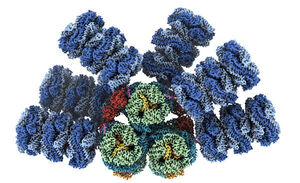
MSU researchers help reveal a ‘blueprint’ for photosynthesis
"New findings in microbes called cyanobacteria present new opportunities for plant science, bioengineering and environmental protection Michigan State University researchers and colleagues at the University of California Berkeley, the University of South Bohemia and Lawrence Berkeley National Laboratory have helped reveal the most detailed picture to date of important biological “antennae.” Nature has evolved these structures to harness the sun’s energy through photosynthesis, but these sunlight receivers don’t belong to plants. They’re found in microbes known as cyanobacteria, the evolutionary descendants of the first organisms on Earth capable of taking sunlight, water and carbon dioxide and turning them into sugars and oxygen. Published Aug. 31 in the journal Nature, the findings immediately shed new light on microbial photosynthesis — specifically, how light energy is captured and sent to where it’s needed to power the conversion of carbon dioxide into sugars. Going forward, the insights could also help researchers remediate harmful bacteria in the environment, develop artificial photosynthetic systems for renewable energy and enlist microbes in sustainable manufacturing that starts with the raw materials of carbon dioxide and sunlight. “There’s a lot of interest in using cyanobacteria as solar-powered factories that capture sunlight and convert it into a kind of energy that can be used to make important products,” said Cheryl Kerfeld, Hannah Distinguished Professor of structural bioengineering in the College of Natural Science. “With a blueprint like the one we’ve provided in this study, you can start thinking about tuning and optimizing the light-harvesting component of photosynthesis.” “Once you see how something works, you have a better idea of how you can modify it and manipulate it." [...]
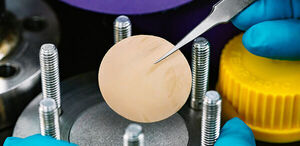
Greening hydrocarbon separation and crude oil refining
"Polymer-based membranes that selectively separate hydrocarbon and crude oil mixtures could eclipse current industrial thermal processes. Polymer-based membranes developed at KAUST could enable greener and cheaper industrial separation approaches. Their stability and selectivity can be tuned by thermal crosslinking to separate simple hydrocarbon mixtures and complex crude oil fractions. Separation processes, such as distillation and evaporation, are central to the chemical, pharmaceutical and petrochemical industries, but they are also energy intensive, expensive and polluting. Each year, crude oil refineries consume about one percent of the total energy used worldwide, and some refineries can even release up to 20 to 35 million tonnes of carbon dioxide (CO2) into the atmosphere. “Decreasing greenhouse gas emissions is a step forward in addressing climate change,” says lead author Stefan Chisca, a research scientist at KAUST." [...]
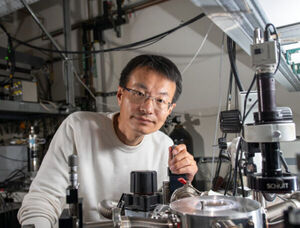
Scientists Grow Lead-Free Solar Material With a Built-In Switch
"Breakthrough offers industry sustainable alternative without compromising performance. Solar panels, also known as photovoltaics, rely on semiconductor devices, or solar cells, to convert energy from the sun into electricity. To generate electricity, solar cells need an electric field to separate positive charges from negative charges. To get this field, manufacturers typically dope the solar cell with chemicals so that one layer of the device bears a positive charge and another layer a negative charge. This multilayered design ensures that electrons flow from the negative side of a device to the positive side – a key factor in device stability and performance. But chemical doping and layered synthesis also add extra costly steps in solar cell manufacturing." [...]
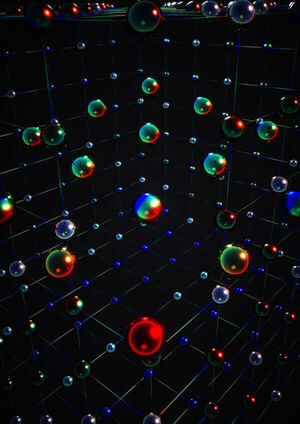
SU(N) matter is about 3 billion times colder than deep space
"Universe’s coldest fermions open portal to high-symmetry quantum realm Japanese and U.S. physicists have used atoms about 3 billion times colder than interstellar space to open a portal to an unexplored realm of quantum magnetism. “Unless an alien civilization is doing experiments like these right now, anytime this experiment is running at Kyoto University it is making the coldest fermions in the universe,” said Rice University’s Kaden Hazzard, corresponding theory author of astudy published today in Nature Physics. “ Fermions are not rare particles. They include things like electrons and are one of two types of particles that all matter is made of.” A Kyoto team led by study author Yoshiro Takahashi used lasers to cool its fermions, atoms of ytterbium, within about one-billionth of a degree of absolute zero, the unattainable temperature where all motion stops. That’s about 3 billion times colder than interstellar space, which is still warmed by the afterglow from the Big Bang. “The payoff of getting this cold is that the physics really changes,” Hazzard said." [...]

Researchers use infrared light to wirelessly transmit power over 30 meters
"New laser charging system could offer safe cordless power for mobile devices and sensors Imagine walking into an airport or grocery store and your smartphone automatically starts charging. This could be a reality one day, thanks to a new wireless laser charging system that overcomes some of the challenges that have hindered previous attempts to develop safe and convenient on-the-go charging systems. “The ability to power devices wirelessly could eliminate the need to carry around power cables for our phones or tablets,” said research team leader Jinyong Ha from Sejong University in South Korea. “It could also power various sensors such as those in Internet of Things (IoT) devices and sensors used for monitoring processes in manufacturing plants.” In the Optica Publishing Group journal Optics Express, the researchers describe their new system, which uses infrared light to safely transfer high levels of power. Laboratory tests showed that it could transfer 400 mW light power over distances of up to 30 meters. This power is sufficient for charging sensors, and with further development, it could be increased to levels necessary to charge mobile devices." [...]
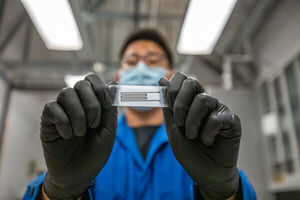
Print, Recycle, Repeat: Scientists Demonstrate a Biodegradable Printed Circuit
"According to the United Nations, less than a quarter of all U.S. electronic waste gets recycled. In 2021 alone, global e-waste surged at 57.4 million tons, and only 17.4% of that was recycled. Some experts predict that our e-waste problem will only get worse over time, because most electronics on the market today are designed for portability, not recyclability. Tablets and readers, for example, are assembled by gluing circuits, chips, and hard drives to thin layers of plastic, which must be melted to extract precious metals like copper and gold. Burning plastic releases toxic gases into the atmosphere, and electronics wasting away in landfill often contain harmful materials like mercury, lead, and beryllium. But now, a team of researchers from the Department of Energy’s Lawrence Berkeley National Laboratory (Berkeley Lab) and UC Berkeley have developed a potential solution: a fully recyclable and biodegradable printed circuit." [...]
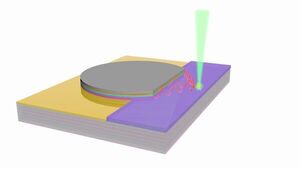
New photodetector design inspired by plant photosynthesis
"Technology uses polaritons to convert light to electrical charge; could boost solar cell efficiency Researchers have developed a new type of high-efficiency photodetector inspired by the photosynthetic complexes plants use to turn sunlight into energy. Photodetectors are used in cameras, optical communication systems and many other applications to turn photons into electrical signals. “Our devices combine long-range transport of optical energy with long-range conversion to electrical current,” said research team leader Stephen Forrest from the University of Michigan. “This arrangement, analogous to what is seen in plants, has the potential to greatly enhance the power generation efficiency of solar cells, which use devices similar to photodetectors to convert sunlight into energy.” The photosynthetic complexes found in many plants consist of a large light absorbing region that delivers molecular excited state energy to a reaction center where the energy is converted to a charge. While this setup is very efficient, mimicking it requires achieving long-range energy transport in an organic material, which has proven difficult to accomplish. To achieve this seemingly impossible task, the researchers used unique quasiparticles known as polaritons." [...]

AI that can learn the patterns of human language
"On its own, a new machine-learning model discovers linguistic rules that often match up with those created by human experts. Human languages are notoriously complex, and linguists have long thought it would be impossible to teach a machine how to analyze speech sounds and word structures in the way human investigators do. But researchers at MIT, Cornell University, and McGill University have taken a step in this direction. They have demonstrated an artificial intelligence system that can learn the rules and patterns of human languages on its own. When given words and examples of how those words change to express different grammatical functions (like tense, case, or gender) in one language, this machine-learning model comes up with rules that explain why the forms of those words change. For instance, it might learn that the letter “a” must be added to end of a word to make the masculine form feminine in Serbo-Croatian." [...]
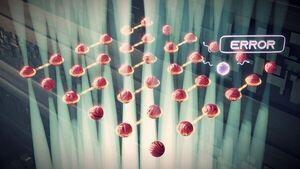
Why ‘erasure’ could be key to practical quantum computing
"Researchers have discovered a new method for correcting errors in the calculations of quantum computers, potentially clearing a major obstacle to a powerful new realm of computing. In conventional computers, fixing errors is a well-developed field. Every cellphone requires checks and fixes to send and receive data over messy airwaves. Quantum computers offer enormous potential to solve certain complex problems that are impossible for conventional computers, but this power depends on harnessing extremely fleeting behaviors of subatomic particles. These computing behaviors are so ephemeral that even looking in on them to check for errors can cause the whole system to collapse. In a paper outlining a new theory for error correction, published Aug. 9 in Nature Communications, an interdisciplinary team led by Jeff Thompson, an associate professor of electrical and computer engineering at Princeton, and collaborators Yue Wu and Shruti Puri at Yale University and Shimon Kolkowitz at the University of Wisconsin-Madison, showed that they could dramatically improve a quantum computer’s tolerance for faults, and reduce the amount of redundant information needed to isolate and fix errors." [...]
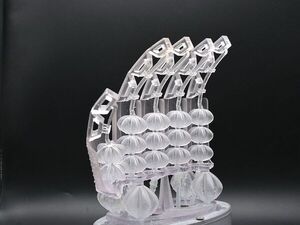
3D artificial pneumatic muscles for future “makers”
"Artificial pneumatic muscles consisting of 3D-printed structures that can extend and contract as required: this is the innovative design of the GRACE actuators devised by researchers from the Istituto Italiano di Tecnologia (IIT, Italian Institute of Technology) in Genoa and the Scuola Superiore Sant’Anna (SSSA, Sant’Anna School of Advanced Studies) in Pisa. The work has been described in Science Robotics and the researchers showcased the actuators’ versatility in an initial demonstration, a pneumatic hand comprising 18 different GRACEs, manufactured in a single printing process. The creation of artificial muscles is a very ambitious goal in the field of robotics, because in nature, muscle tissue has complex characteristics that permit highly versatile movements, from rapid, powerful contractions to small and precise changes in body shape, such as those of human facial expressions. Although individual muscle fibres can only contract, it is their specific arrangement in complex muscle architectures that enables articulate deformations such as bending, twisting and antagonistic movements. The research team worked on this problem by starting from the individual pneumatic actuators. Each actuator can expand, extend and contract simply by means of its geometric shape, resembling a spindle with pleats, comprising a single unit that can be 3D printed and manufactured using different materials and in different sizes." [...]

Mimicking Termites to Generate New Materials
"Inspired by the way termites build their nests, researchers at Caltech have developed a framework to design new materials that mimic the fundamental rules hidden in nature's growth patterns. The researchers showed that, using these rules, it is possible to create materials designed with specific programmable properties. The research, led by Chiara Daraio, G. Bradford Jones Professor of Mechanical Engineering and Applied Physics and Heritage Medical Research Institute Investigator, was published in the journal Science on August 26. "Termites are only a few millimeters in length, but their nests can stand as high as 4 meters—the equivalent of a human constructing a house the height of California's Mount Whitney," says Daraio. If you peer inside a termite nest you will see a network of asymmetrical, interconnected structures, like the interior of a loaf of bread or a sponge. Made of sand grains, dust, dirt, saliva, and dung, this disordered, irregular structure appears arbitrary, but a termite nest is specifically optimized for stability and ventilation." [...]
Projetos Maker
Diversos Projetos interessantes.
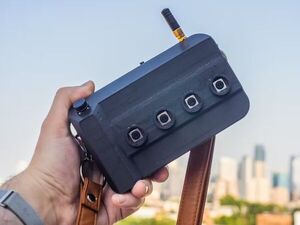
Raspberry Pi Quadrascopic Camera
"Using a Raspberry Pi CM4 and an Arducam quad sync hat, a digital quadrascopic image can be taken, similar to the Nimslo and Nishika. I wanted to make this since there's really no digital equivalent. Doing so could speed up the workflow by quite a bit if you're eliminating the need to develop and scan 35mm from the Nishika or Nimslo. On top of that, those cameras are going for ~$300+ on eBay. The total project cost of this was just about $200 so if you're okay with a janky digital image, you just might be able to save a buck. The biggest current issue is that there's about a 100ms delay between the first and second set of photos." [...]

DIY Brushless DC Motor (Newman Motor)
"This project I present you is a affordable STEM project to teach our kids how to build a brushless DC electric motor with its electric controller and to learn basics about electromagnetism. "A brushless DC electric motor (BLDC motor or BL motor), also known as an electronically commutated motor (ECM or EC motor) or synchronous DC motor, is a synchronous motor using a direct current (DC) electric power supply. It uses an electronic controller to switch DC currents to the motor windings producing magnetic fields which effectively rotate in space and which the permanent magnet rotor follows." (Wikipedia) The motor design is inspired by the Newman motor. Once the motor has been built, our kids can play changing resistances, diodes or capacitors to modify the speed or the torque of the motor. The motor works connected to a USB port (5V and 300mA minimum) or connected to three 6V, 100mA solar panels in serial connection (you can see this solar version on Instagram) It uses a list of materials very easy to find in whatever technology class." [...]
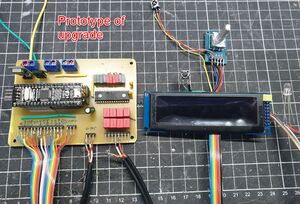
Arduino Gainclone 2.0
"After running my Arduino controlled Gainclone amp for the last 8 years, the LCD died and I decided that it was time for a revamp. This instructable is based on the original and is designed to be an 'upgrade' from that. Please see it here - https://www.instructables.com/Arduino-Powered-Gainclone-amplifier/ This could also be used just as a sound processor/Input switcher board to attach to a commercial AMP but is designed to add some smarts to a generic home made 2 channel amplifier. This time around: - New graphic based OLED screen - Upgrading to STM32F103 (AKA Bluepill) - Internal RTC (But with no battery, you could add...) - Ditching the Radio Module (because I never used it, and it wasn't implemented well) - Fixed rotary encoder (It worked but not the best) - Ability to set the time from controls - Professionally fabbed board The STM32F103 is like an Arduino (Nano/Uno etc) on steroids. Although it is magnitudes more powerful than the old Atmega32, the reason I have used it for this upgrade is that it has much more programming space that is needed for storing the fonts for the LCD. The code runs at about 160% of the available space in an Atmega32 chip but only takes 40% of the STM32F103CBT6 or 85% of the STM32F103C8T6 at 55840 bytes." [...]

Wio Terminal Tetris Game
"The Wio Terminal is a SAMD51-based microcontroller with Wireless Connectivity compatible with Arduino and MicroPython. It runs at 120MHz, 4MB External Flash and 192KB RAM. The Wio Terminal itself is equipped with a 2.4” LCD Screen, onboard IMU (Accelerometer), Microphone, Buzzer, microSD card slot, Light sensor, and Infrared Emitter. Also it have three buttons, one five way switch (joystick), and reset switch. It supports both Bluetooth and Wi-Fi providing backbone for IoT projects. There is also a 40-pin connector on the back, that connects external components and modules." [...]
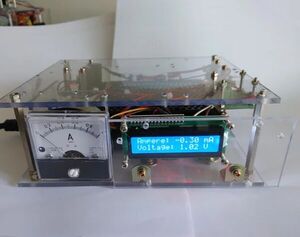
Power Supply With Current Meters
"Always I'm interested in how much current is flowing in the electronic circuits I made. Therefore, I had bought a 1A analog current meter before for measuring the power consumption of circuits. But the analog meter is forgotten for a quite long time as I don't know how to use the device to measure current. But recently I'm beginning to use the INA219 module in several DIY projects and becoming quite comfortable with measuring current with live power supply circuits. Therefore, I tried to make some useful power supply devices equipped with two different types of current meters as shown in the picture above. For the DC conversion from 220V AC input and supplying regulated voltage to circuits, a commercially available ready-made switching power supply is used." [...]

Driving a VFD with MAX7219
"The process of making a salvaged VFD Arduino-friendly. You can get your hands on some very interesting components when disassembling old electronics. One such I've found was this VFD (Vacuum Fluorescent Display). Trying to reverse-engineer the controller was, however not the way to go as all ICs on the board were covered with glob-tops. So I decided to de-solder it from the control board and build a simple driver. Here's how to do it with a MAX7219 (I've had a few left from a previous LED project) and some other components." [...]

sArm
"Robotic Arm Smart Controller System with IoT Introduction A robotic arm is a type of mechanical arm, usually programmable, with similar functions to a human arm. current days robotic arms are becoming a replacement for humans in working tasks, especially repetitive tasks. They are more efficient and accurate than humans. Robotic arms are currently used in many fields such as medical, space, nuclear and other researches, industries, education, etc. when thinking about robotic arms, what comes to mind is their high price, big size and complexity. For students and small industries, it has been not possible to access a better robotic arm for educational or industrial purposes." [...]

TinyML Made Easy: Sound Classification (KWS)
"We are continuing our exploration of Machine Learning on a giant tiny device, the Seeed XIAO BLE Sense. And now, classifying sound waves. Introduction In my tutorial, TinyML Made Easy: Anomaly Detection & Motion Classification, we explored Embedded Machine Learning, or simply, TinyML, running on the robust and still very tiny device, the Seed XIAO BLE Sense. In that tutorial, besides installing and testing the device, we explored motion classification using real data signals from its onboard accelerometer. In this new project, we will use the same XIAO BLE Sense to classify sound, explicitly working as "Key Word Spotting" (KWS). A KWS is a typical TinyML application and an essential part of a voice assistant." [...]
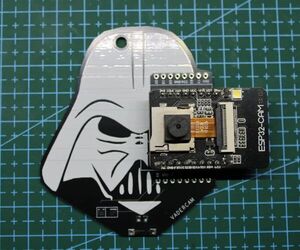
VaderCam 1.0
"Greetings. So here's something eye-catching,Vader Cam. Vader Cam is an ESP32 CAM Based Device that is a live video feed streaming device, we can access the feed through a web app and see what's going on. It's like a Nanny Cam or surveillance Device that is themed after Darth Vader. Darth Vader is keeping his eye on things, I made this device to use it for monitoring the 3D Print Job that is being done in another room but we can use this device to monitor all sorts of stuff, from nannies to kids or even pets. This Instructables is about the whole built Process of this Vader Cam so let's get started." [...]
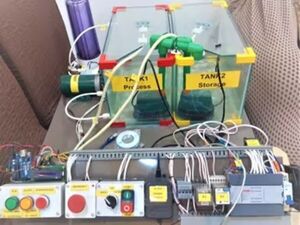
Arduino, PLC based SCADA for water treatment plant
"Collect analog date by the Arduino send then through Modbus rs485 to PLC and show them on SCADA through Modbus rs232 ABSTRACT PLC technology “Programming ControlSystem” is quite an interesting and crucial type of modern automation innowadays factories and industries. Due to emerge of this technology in severaldecades ago but it’s still one of the most used and practical kind of controlsystem all around the world. SCADA “Supervisory Control and Data Acquisition”is a control system architecture comprising computers, networked datacommunications and graphical user interfaces for high-level supervision ofmachines and processes. Nowadays, almost all of the simple and complicated industries have thesetypes of automation the two main part of any factory is the control systemwhich here implemented by using PLC and the supervisory or operational partwhich here designed by a computer-based SCADA system. We can apply this project to anywater treatment plant it’s a prototype based on its kind of sensors but in caseof using the industrial ones we can control the high scale water filtration ortreatment plants. This project designed of threelevels the first one is the control level where the sensors collect all thephysical data like level and temperature and combine them together and sendthem via industrial protocol to the PLC and the second level is the controllevel where the data processed and execute by using the logic inside the PLCall the logics written according to the IEC 61131-3 and the supervisory levelhad done by suing industrial protocol and a SCADA system to show the data tothe operator in the remote control station." [...]

Electronics Projects Power Bank
"A common problem when making battery-powered electronic projects is how to have a stable 5V output from a battery that is constantly reduced in voltage. Additionally, when using lithium batteries, you must make sure that the battery is never discharged beyond a set voltage in order to prevent permanent damage to the battery chemistry. To solve this, there are a variety of modules like the TP4056 and others that solve part of the puzzle but it's always up to the project maker to decide how to mount the battery and where to place the control electronics. When working on the RGB play button, I used a power bank module to protect the battery and also to have a way how to charge it and while at it, I came to the idea that I can actually make a custom PCB that can then be used to solve this problem. Supplies: - Power bank PCB - CB-18650-PC2 battery holder - Power bank module - 18650 battery cell - Soldering station - Multimeter - USB Power Meter - Wire snips - Resistors kit - RGB Flash LEDs - Soldering helping hand" [...]

I made an Induction SOLDERING IRON
"A powerful, stable and highly effective soldering iron. Do soldering in a new way with red hot color of tip. Induction heaters are trending the new market nowadays. They are cheap but the cost of maintenance is quite high. They are able to draw a very high current from the supply. Then use induction phenomena to heat the material." [...]

ESP RainMaker IoT Project With Google Alexa Bluetooth & IR
"Make ESP RainMaker IoT Project using ESP32 to control relays with Google Assistant, Alexa, Bluetooth, IR Remote, & manual switches. In this IoT project, I have shown how to make ESP RainMaker IoT Project using ESP32 to control relays with Google Assistant, Alexa, Bluetooth, IR remote, and manual switches. real-time feedback. So, you can easily make this home automation project at home just by using an ESP32 and relay module. Or you can also use a custom-designed PCB for this project. Required components: - ESP32 DevKIT V1 Amazon - 4-channel or 8-channel 5V SPDT Relay Module Amazon - TSOP1838 IR receiver (with metallic casing) - Bluetooth or BLE module (ANY) - Manual Switches or Pushbuttons Amazon - Any IR Remote" [...]

DIY Camera Slider for Content Creation
"I have been thinking of ways to up my filming game but I also want to do so on a budget. After doing some research online and seeing how folks made their own camera sliders, I tried it myself. This project had many failures to get to a usable slider but with a little patience and scrappiness, I came up with this final product. I hope you enjoy and get some good tips out of my mistakes. Supplies: - Metal electrical Conduit (1/2-inch 10 foot) - Pipe cutter - Conduit holder - PVC piping (3/4-inch) - Epoxy - Motor, I used an asynchronous motor scrapped from an old microwave - Camera holder, I used scrap wood - Stand aka Base, again, I used scrap wood - Pulley mechanism, I am using twine - Sand paper - Felt - Hot glue, if your felt doesn't have a sticky backing - Fasteners, various - Electrical cord (preferably with a switch), I used a cord scrapped from an oscillating fan - Something to keep the cord from slipping, I used a milk bottle cap fastened with a screw" [...]
Secção Videos
Videos interessantes.
That's all Folks!



